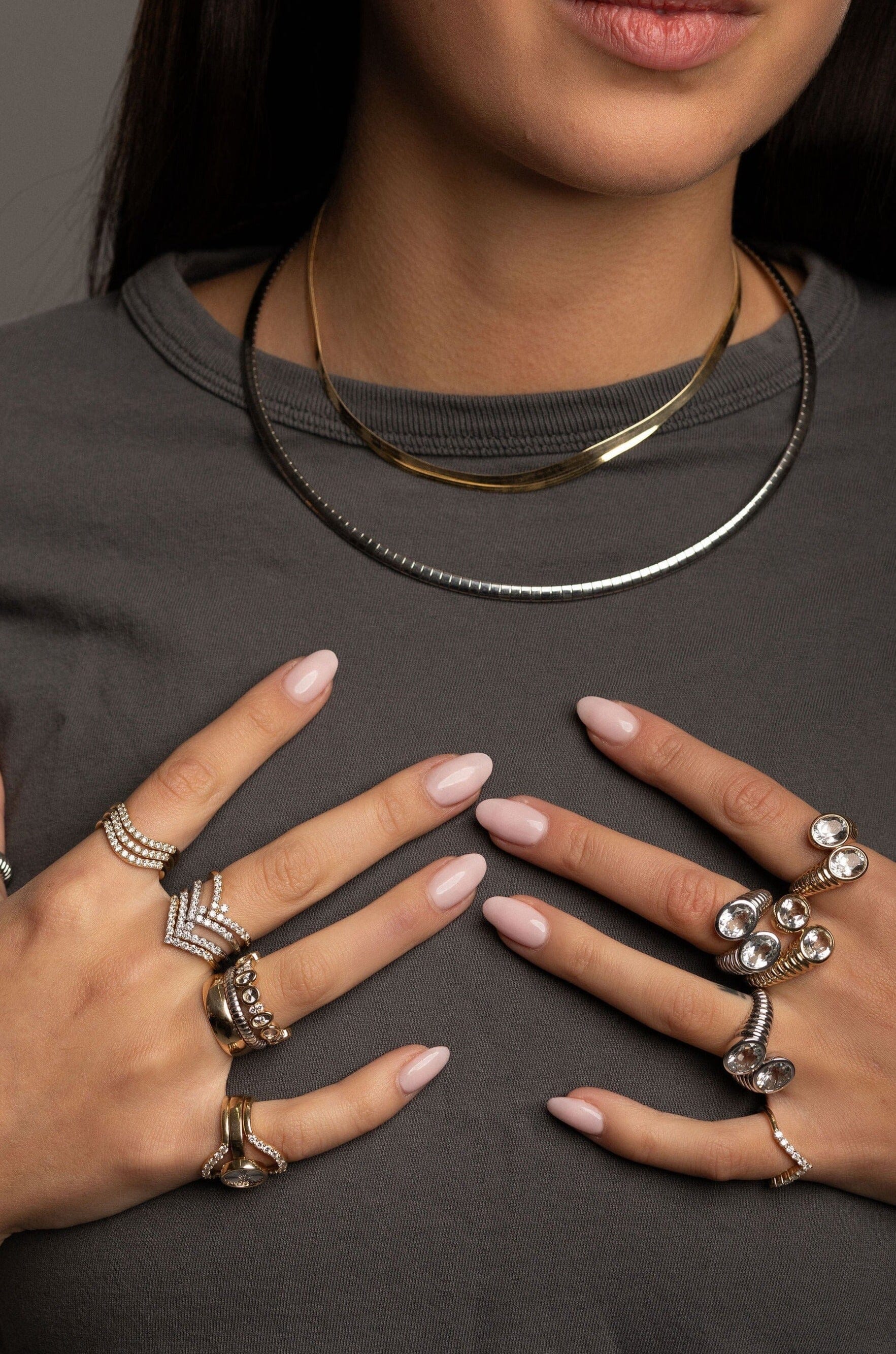Understanding Solid Gold
Delving into the heart of gold jewelry, we encounter the three primary categories—solid gold, gold-filled, and gold-plated. Solid gold stands as the epitome of purity, containing 100% gold. However, its malleability necessitates alloying with metals like copper and silver, forming various karat compositions.
Deciphering Karats: A Measure of Gold Purity
Understanding the significance of karats becomes paramount when choosing gold jewelry. A 24-karat gold piece is 100% pure gold, while lower karats, such as 10, 12, and 14, introduce alloy components for enhanced durability. The choice of karatage depends on the intended use, with lower karats recommended for pieces prone to wear and tear.
Gold-Filled Jewelry: Composition and Qualities
Gold-filled jewelry, a cost-effective alternative to solid gold, involves bonding solid gold layers onto a base metal core. Unlike gold-plated counterparts, gold-filled jewelry boasts measurable gold content, ranging from 10K to 24K. The layering process ensures longevity, making it a durable and sustainable choice for exquisite adornments.
The Nuances of Gold-Plated Jewelry
In the realm of affordability, gold-plated jewelry emerges as a popular option. This process involves applying a thin gold layer onto a base metal, often brass or nickel. While budget-friendly, gold-plated pieces are prone to quicker wear and may expose the base metal beneath, affecting both appearance and longevity.
Choosing Between Gold-Filled and Gold-Plated: A Comparative Analysis
Comparing gold-filled and gold-plated options reveals distinct differences. Gold-filled jewelry, with its thicker gold layer and higher durability, presents a more sustainable choice. On the contrary, gold-plated counterparts, though budget-friendly, may compromise longevity and overall quality, particularly for those with sensitive skin.


